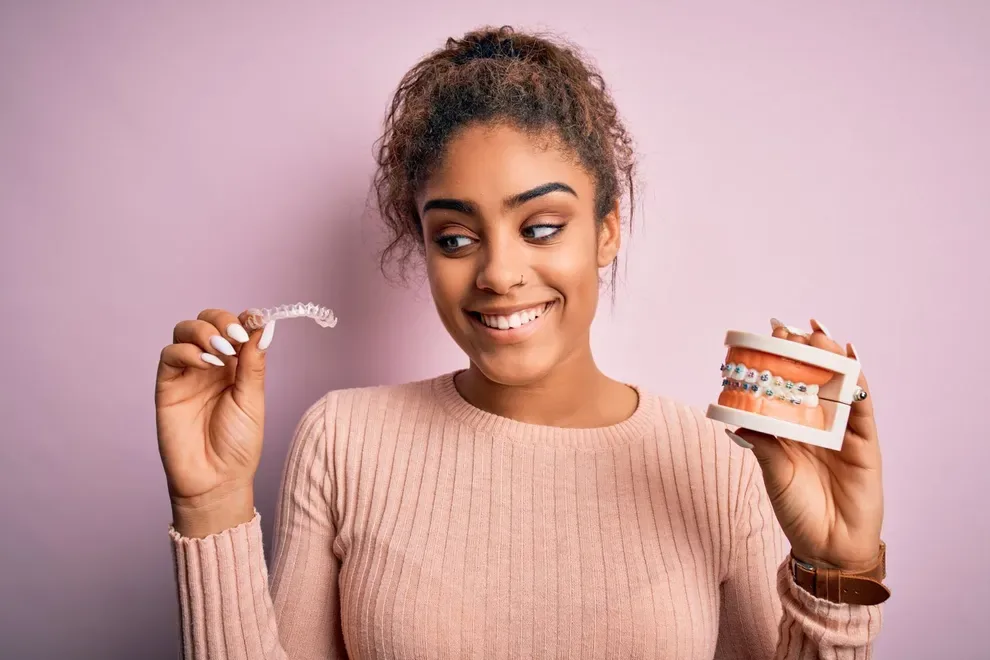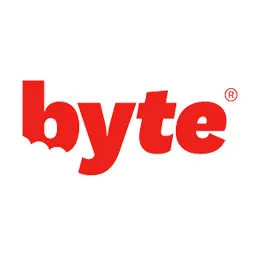Age Limits for Teeth Aligners & Braces

Table of Contents
- Children vs. Adults for Aligners & Braces
- How Young is too Young?
- How Old is too Old?
- Limits for Aligners
- Age-specific Treatment Guidelines
People of all ages may experience orthodontic problems. But is there an age limit on orthodontic care like braces and aligners? Can a patient be too young or too old?
While a patient may be too young for aligners or braces, there isn’t an age limit. Older patients can benefit from the health and aesthetic benefits of orthodontic work.
Age-specific orthodontic treatment guidelines
This table can help you understand the typical orthodontic treatments approved for people by age group:
| Children | Adolescents | Adults |
Palate expander | X | X |
|
Braces |
| X | X |
Aligners |
| X | X |
Note that these are recommendations only. Only a dental professional can help you understand the treatment type that’s best for you and your smile.
Children vs. Adults for Aligners & Braces
Many children are born with jaw issues that can create teeth misalignment (malocclusion) early in life. Others develop crooked teeth from genetics or oral habits like continued pacifier use or thumb sucking.
While early intervention for orthodontic issues has many benefits, some treatment options are limited when it comes to smaller children. At-home clear aligner providers will usually only treat patients who have lost all of their baby teeth, for example, and this usually makes the minimum age around 12 (with parental approval). Some in-office aligners offer treatment programs for children as young as 6 years old.
Braces may also be an option for younger children. Experts recommend a first orthodontist visit at age 7. In some cases, the orthodontist may recommend beginning treatment around that time.
Adults also may experience teeth misalignment for a number of reasons. Some have lived with an untreated orthodontic issue for most of their lives. Others may develop a malocclusion after an accident or after their teeth shift due to losing a tooth.
There is no “too old” for orthodontic treatment. Misalignment problems can result in a number of oral health problems, including decay, gum problems, and jaw strain. It’s never too late to take control of your oral health, especially when considering the direct impact it has on your overall health and daily activities like eating and talking.
How Young is too Young?
It's common for very small children to have gap-toothed smiles. Baby teeth fall out before the adult versions come in, and the delay can leave a child's mouth looking lopsided. But some children have significant smile problems that orthodontic care should solve.
Parents with concerns should visit an orthodontist before the child reaches 7 years old. An expert could do the following:
Train: Some children develop crooked or protruding teeth due to an unusual tongue thrust or thumb sucking. An orthodontist could advise parents on how to stop the damage before it worsens.
Guide: Some children benefit from early treatment with night guards or elastic bands, but they're not quite ready for braces. An orthodontist could help with that.
Monitor: Some issues seem significant now but fade away with time. An orthodontist could watch over problems and step in if they worsen.
Experts don't recommend giving orthodontic care to children younger than 7. In most cases, young children need time for their adult teeth to erupt. Their jawbones may be changing and lengthening too, and that work isn't done until later in life.
Risks & benefits of early orthodontic intervention
As a parent, you want your child to have the best care for serious problems, and you want the work to start right away. It's reasonable to push for early intervention if your child's health and well-being are at risk, but there are drawbacks to early treatment.
In many cases, children aren't ready for either braces or aligners until they're at least 9 years old, while some children aren’t ready until age 14.
Benefits of early treatment
These are some of the benefits of early treatment:
Reduced length of orthodontic treatment
Reduced need for more extensive (and expensive) treatment later in life
Improved quality of life for the child
Risks of early treatment
These are some disadvantages of early treatment. Researchers say these are common risks associated with orthodontic treatment:
Weak dental enamel, especially if the child doesn’t brush properly
Enamel trauma when the brackets are removed
Traumatized teeth
Periodontal issues, especially if the child doesn’t brush properly
Trauma to the mucous membranes
Notice that many of these risks are associated with poor dental hygiene practices. Children may not be as capable of cleaning their teeth due to reduced dexterity and small hands. They may also be less likely to dedicate time to their cleaning habits. If you choose early care for your child, you must be careful to ensure that the child cleans.
How Old is too Old?
Adults have likely lived with their crooked teeth for most of their lives. In studies, they cite issues like "hope for a better future" as a prompt for getting care.
Any adult who wants to enhance their smile can do so. There is no upper age limit on treatment with either aligners or braces.
Experts point out that orthodontic devices like braces and aligners ultimately work in the same manner regardless of a person's age. These devices apply pressure to teeth to move them in the right direction. The pressure up top results in bone remodeling down below, and the enhanced smile should be permanent when treatment is complete (with retainer use keeping the teeth in place).
That's true whether someone is young or old. As long as all the adult teeth are present, it's appropriate to get treatment. Missing teeth will require replacement in order to ensure teeth can’t shift after correction.
Pros of late treatment
Benefits of late treatment include the following:
Enhanced confidence: People who delay enhancing their smiles have likely lived for years hiding their teeth behind their hands and worrying about how they look. Putting all of that worry and shame behind them can be very liberating at any age.
Improved oral health: Misalignment can cause a number of oral health problems, including decay, gum inflammation and disease, jaw issues (including TMJ), and wear on the teeth’s protective enamel. Correcting malocclusion can put a stop to these problems and complications before they get worse.
Avoiding problems in old age: Many older adults struggle with teeth problems as they grow older, and it can affect their quality of life and independence. Correcting misalignment can help to prevent problems with eating and speech later. It may also encourage a new commitment to oral care that will improve well-being as aging becomes a reality.
Cons of late treatment
While treatment is available at any age, there may also be some disadvantages to late treatment.
Long treatment times: Older bones and tissues simply don't move and remodel as quickly as their younger counterparts. You may need to spend more time in either braces or aligners to get the results you want.
Possibly needing other dental treatments: You may need to correct other issues (such as missing teeth or cavities) before beginning orthodontic treatment, especially if you’ve been lax on oral hygiene.
Insurance difficulties: Not all dental insurance plans cover orthodontic care for adults, although some do. If you don’t have coverage, at-home aligners may be an option. Many top providers, including Byte, offer a low one-time fee or affordable payment plans.
Limits for Aligners
Byte aligners can help children as young as 12 years old. We will ask for parental approval for any customer younger than 18. All candidates must have all of their adult teeth and receive approval from their clinical team.
Byte aligners are comfortable to wear, and they're hard to see. For any child looking for an easy way to amend their smile, our products are a good choice.
We have no upper age limit, and Byte aligners are a great choice for adults. HyperByte® technology may help to accelerate tooth movement and reduce discomfort, which means it can often help our adult customers get the smile they want without waiting years for it. You’ll only use the HyperByte tool for 5 minutes per day, but it can make a big difference in your treatment timeline.*
Ready to take the next step? View our aligner plans.* Preliminary clinical studies of small groups of users have shown that daily recommended use of a high-frequency seating device, functionally equivalent to HyperByte, with clear aligners may help with comfort and speed of tooth movement.
Will treatment timelines vary by age?
The American Association of Orthodontists (AAO) says that the physiological process that moves teeth through bone does not change with age. If force is placed on your teeth, they will move.
The biggest change involves time. The AAO says that treatment time frames are slightly longer in adults than in children. Older people have denser bone tissue than children, so they need more time to shift teeth. Older people may also have underlying conditions (such as fillings, a history of smoking, or tooth grinding) that can change treatment time frames.
Frequently Asked Questions
These are the questions we often hear about age limits for aligners and braces:
